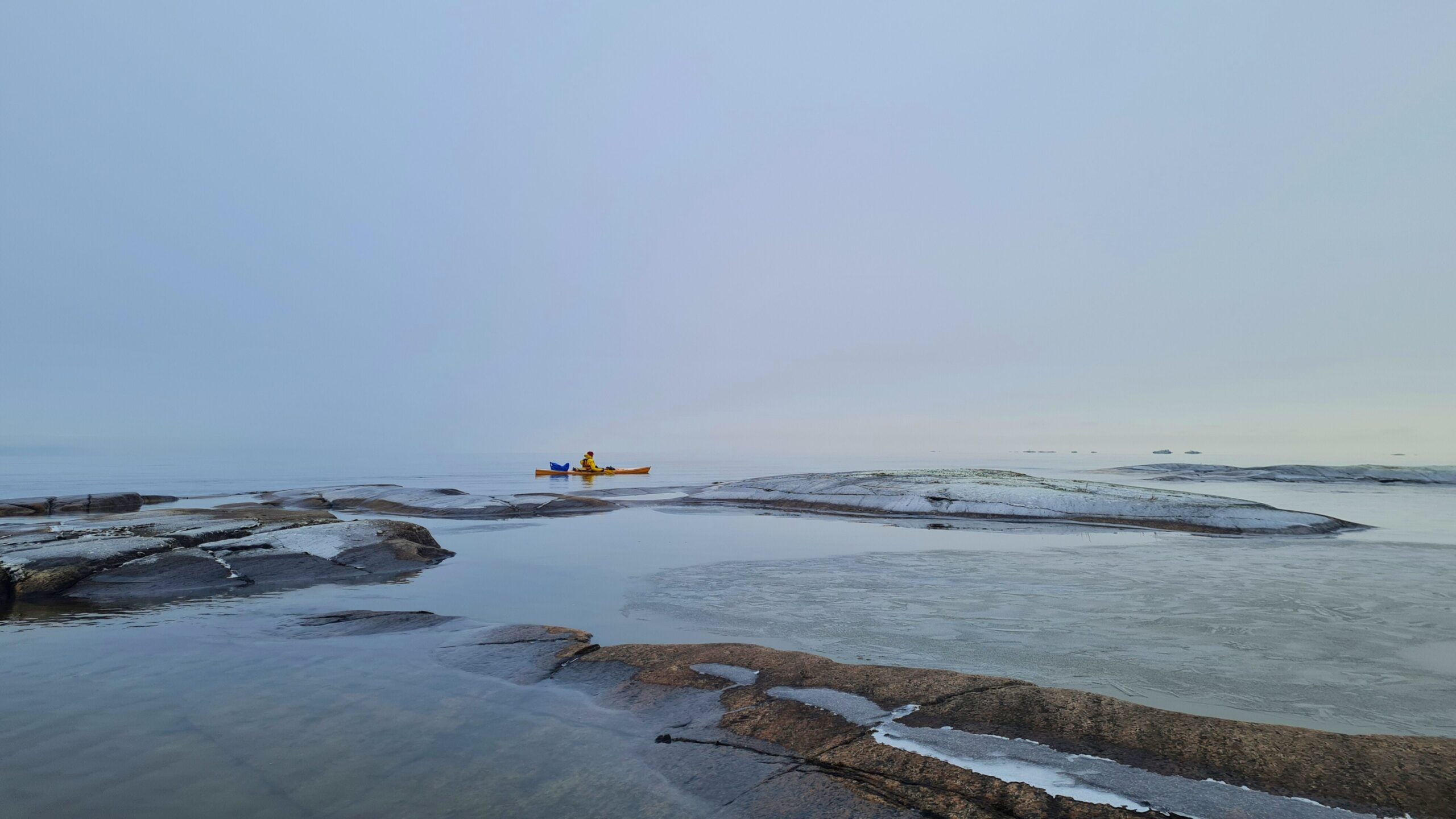
Yttre Bodane is one of my favourites among Swedish nature reserves. Here, Vänern meets Dalsland’s beautiful hilly mountain peaks adorned with magical pines and heather and bogs in valleys and bays. The meeting is dramatic in an incomparably beautiful way – the Dalsland landscape seems to shoot out into Vänern to split up into a small archipelago full of islands. Here there are steep rocky beaches, forested islands and lots of bare skerries. After a few paddles, the feeling of wilderness immediately sets in.
But even if you walk along the paths in the reserve, you can experience a varied nature with a rich flora, many different bird species and a whole 113 different species of lichen. For me it is difficult to classify lichens but they make fantastic patterns on both boulders and trees.
But now in winter it is the landscape itself that attracts us! After packing the kayaks and putting on dry suits, life jackets and safety equipment, we set off with the kayaks in tow. It is 300 metres between the parking lot and Lake Vänern, so a kayak trailer is recommended. It is worth the effort because after just a few paddles the feeling of freedom sets in, the pulse slows down and the breath becomes deeper. The senses are sharpened and the adventure has begun!
From Jövik we paddle south through mirror-like water. There is no wind, the air is crystal clear and the colours of the landscape are intense. The sun has risen and the temperature is -2 degrees. Lake Vänern’s surface water temperature is around 3 degrees. There is a thin layer of ice in the small coves and in shady areas the nature is still powdery with snow. Some hikers move on the trails and are surprised by the two paddlers paddling through the winter archipelago.
We follow the land and wind around islands and skerries, breaking some ice in straits and bays. As we approach Kalvön we see two white-tailed eagles in the pine tops. They seem as curious about us as we are about them. One of the white-tailed eagles takes off, the other stays put. We decide to paddle in a large arc around both the white-tailed eagle and the island of Snöö so as not to disturb the mighty birds that are already in mating season. A few terns rise from the water surface with their characteristic wing noise and a crow can be heard in the distance. Otherwise it is completely silent.
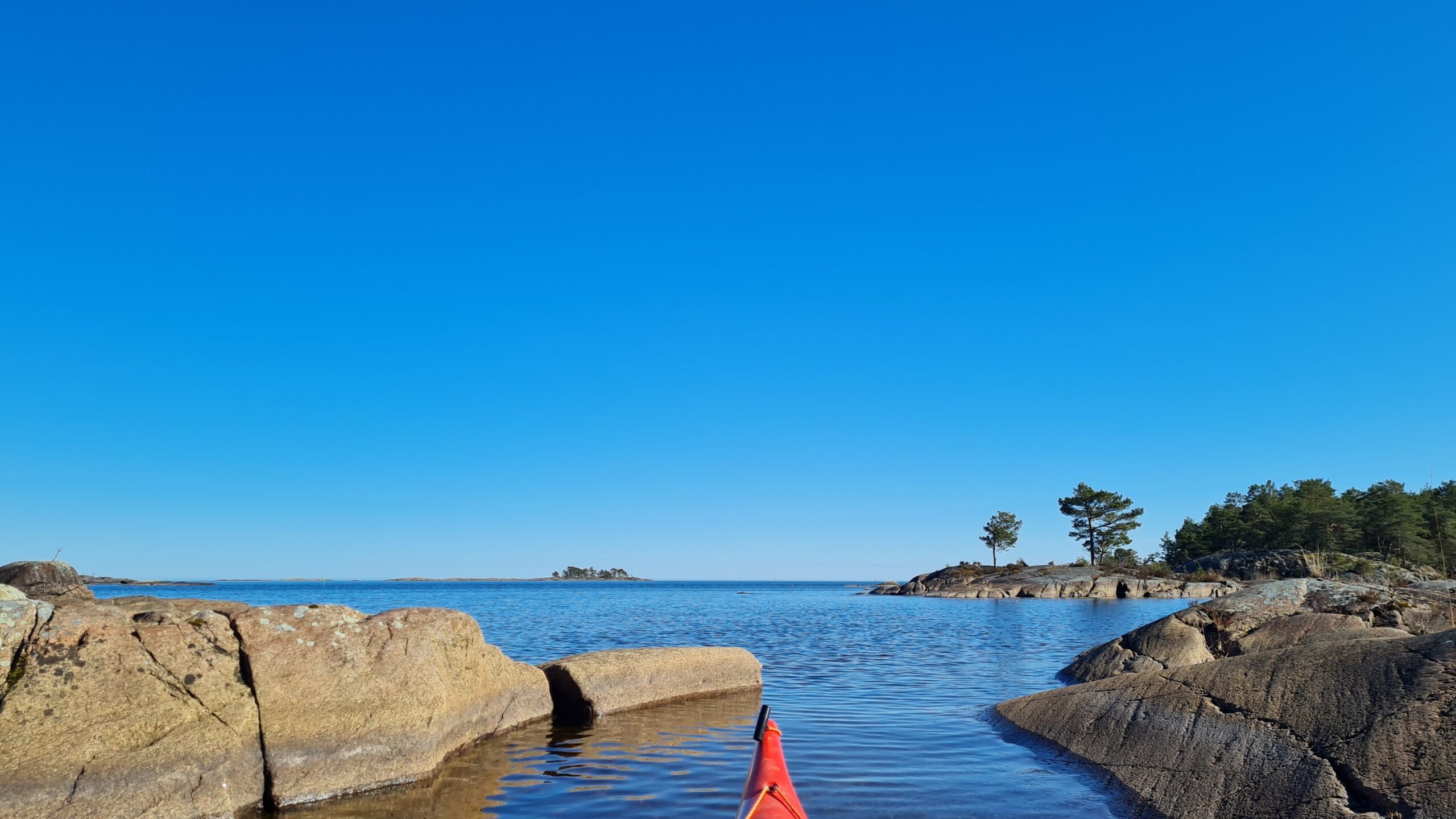
We pass Norra Limskäret, take a slow lap around Södra Limskäret and sometimes hold our breath to take in this magical landscape. A mirror-like Lake Vänern is not something you get to see every day.
We paddle on and enjoy as much as we can. It doesn’t go fast. But we have no other goal for the day than to enjoy it. When we get to Källsöholmarna we think it’s time for an early lunch anyway. There is ice in the small lagoon but with a little speed the kayak breaks the ice easily. It is obvious that the islets with their smooth rocks are popular for camping. There are anchor stones for the tent ropes in many places here.
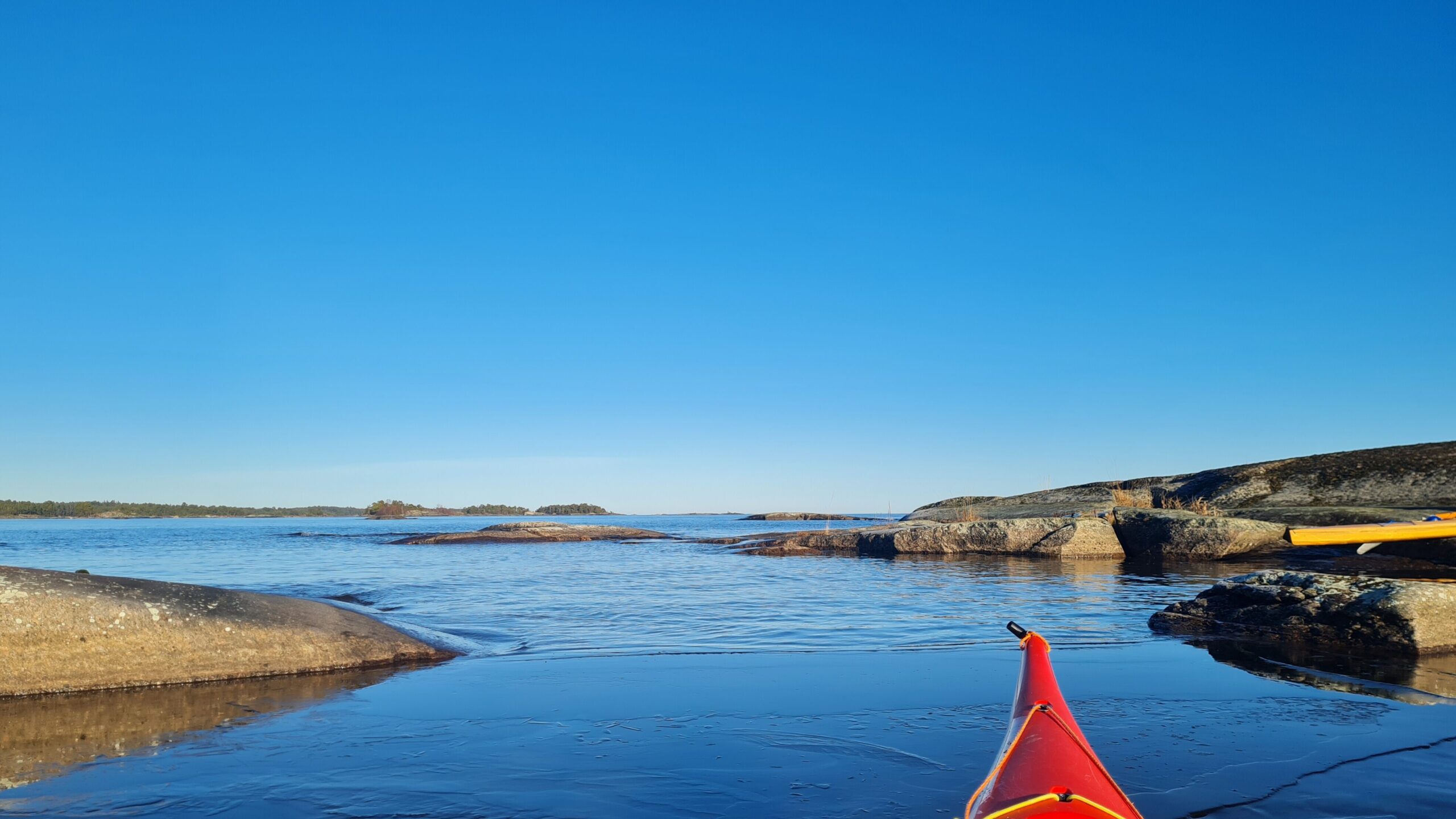
On Källsöholmarna we stop for a long time and just enjoy it. The water around us is still mirror-like. But we see that there are waves further out on the lake. A friend who is out with a boat on Lake Värmland (the other side of Lake Vänern) has just announced that the wind is blowing 8m/s northwards at his place and that the boat is rocking a lot. Imagine how the weather can vary so much on small, big Lake Vänern!
Finally the cold creeps into our dry suits and it is time to move again. Now we paddle northwards and wind around islands and through the clusters of small islets in the outer archipelago. There is almost no ice here at all. We see the white-tailed eagle again and a few great skerries – otherwise the archipelago is completely quiet. At one of the islands we stop at an osprey nest waiting for its summer guests. It is an impressive structure on a beautiful cape that the ospreys return to every March-April. We look forward to meeting the pair again later this year. But then we should keep a significantly greater distance from the nest and the birds.
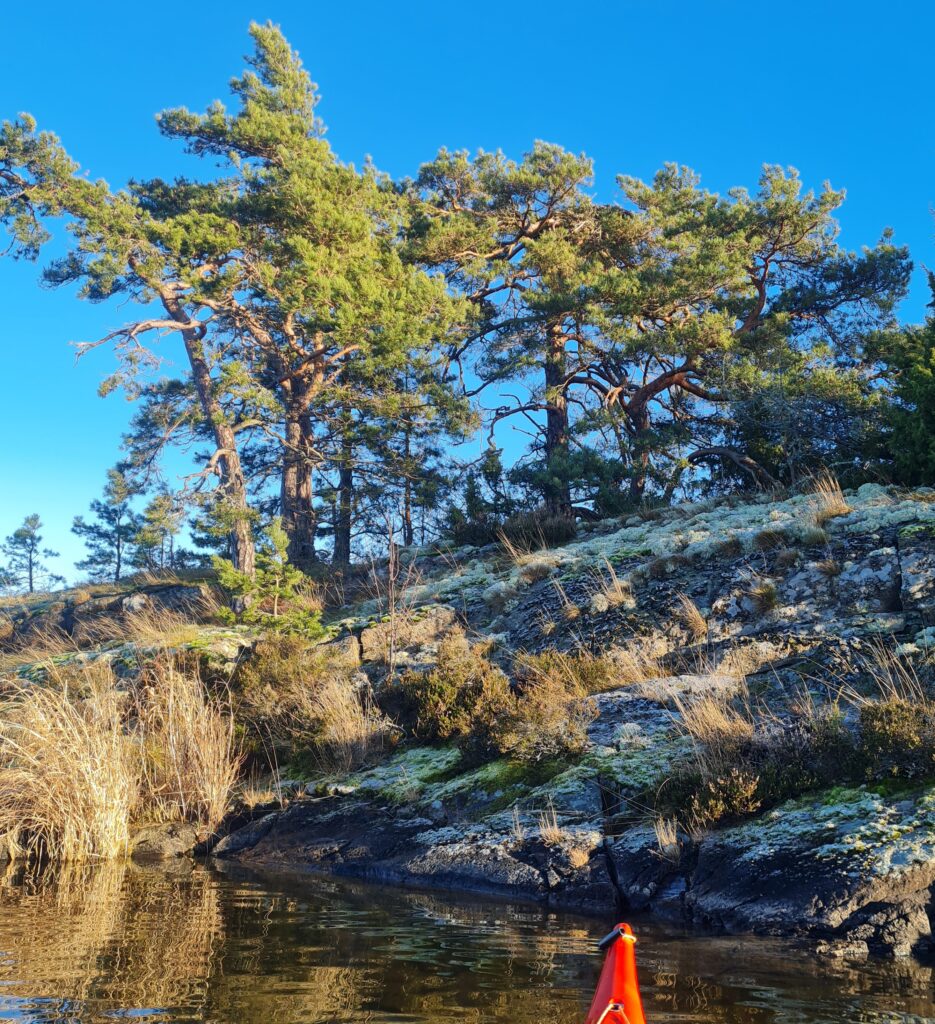
It is soon getting dark and the shadows are stretching further and further out from the mainland and out over the archipelago. Soon we paddle into the cool shade and think about where to camp for the night. We choose one of our favorite islands in the northern part of the archipelago. We have camped here a few nights before. One spring night we were accompanied by a newly arrived reed sparrow that chirped happily through the night in the reed bed next door. So we will never forget what a reed sparrow sounds like!
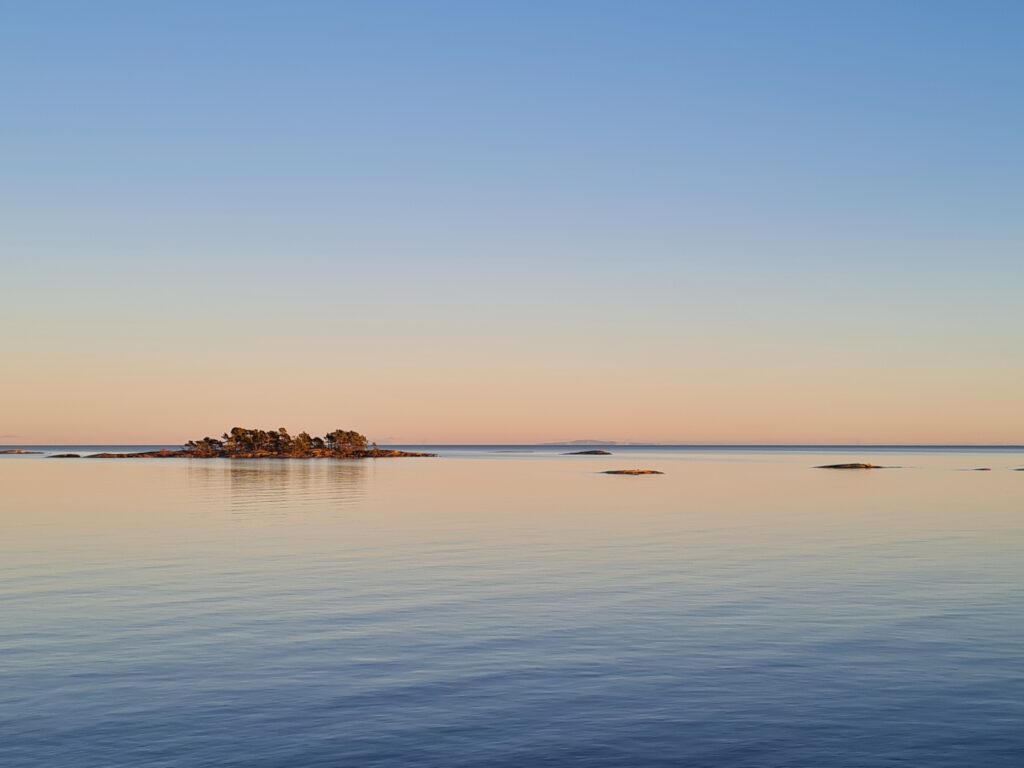
But now it is deafeningly quiet. And through the silence our noise cuts through. The kayaks breaking through the ice and all the rustling as we unpack all the gear from the kayaks. It feels good when the tent is set up, the sleeping mats inflated and a small fire warms both hands and food. The senses become dull and fatigue sets in quickly. But before we crawl into the tent we look for a long time at the magical starry sky above us and hope to catch a glimpse of the Northern Lights. But the Northern Lights only shine with their absence.
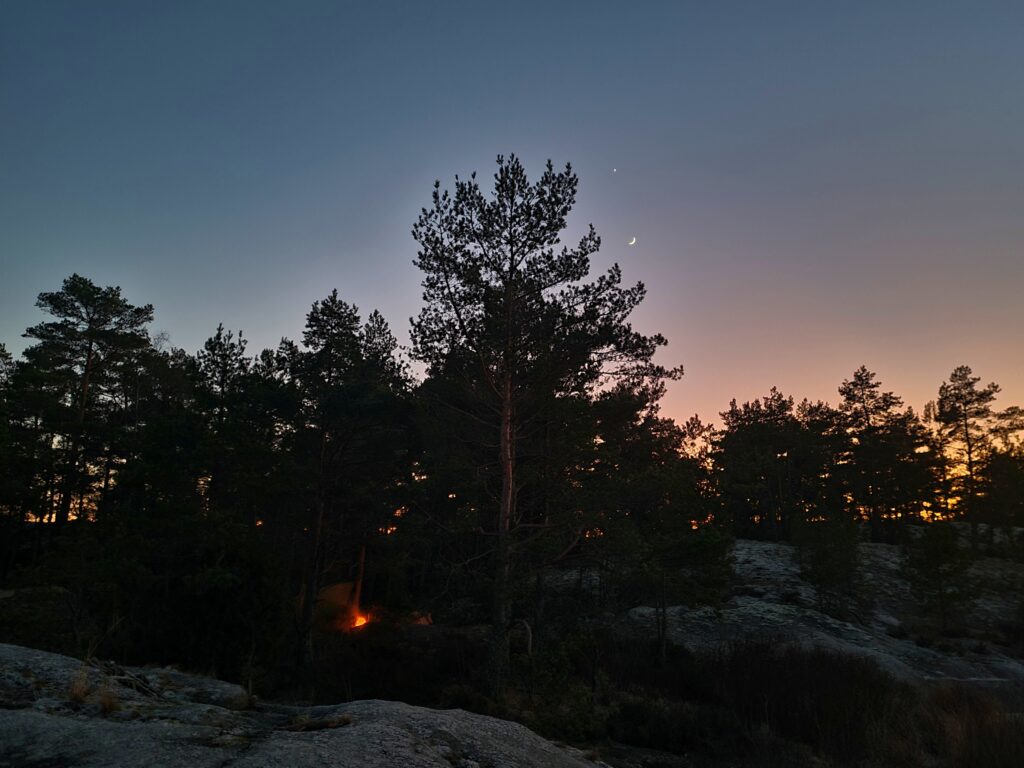
The morning is bitterly cold and the sky hangs low over a gray, frosty landscape. For breakfast, there are luxury pancakes and coffee. Four white-tailed eagles are fighting over a prey on a nearby islet. A few great terns suddenly appear out of nowhere. We are soon in the kayaks again and glide out of the bay and onto the mirror-like lake. Just then, the clouds open and heavy, silent snowflakes dance down from the sky. The magic is total. We sit in complete silence in the kayaks for a long time. A pair of songbirds hover silently between the islets in the distance and the sky. We have found ourselves in the middle of a fairy tale.
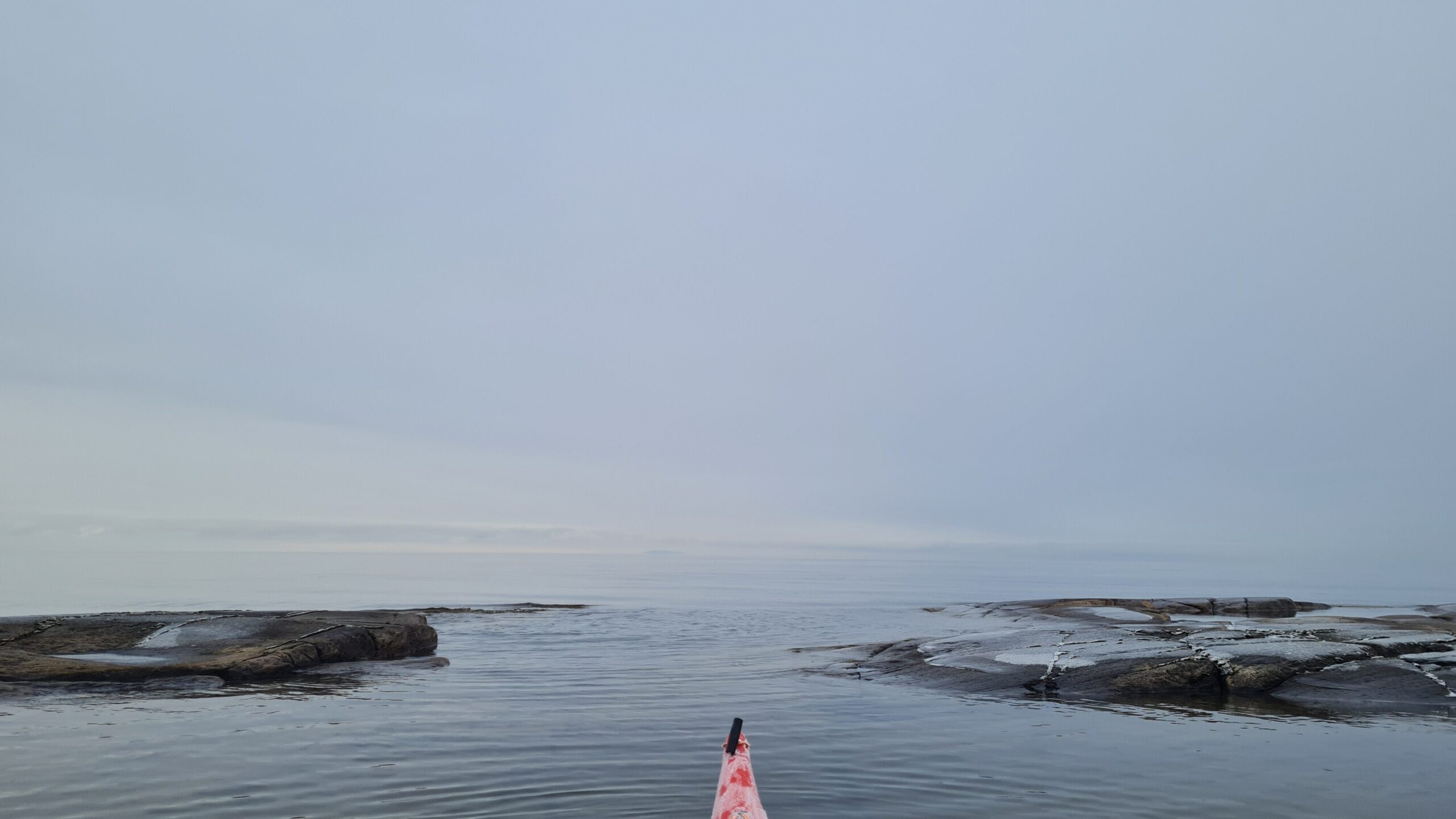
Now we wind our way south again, first through the outer archipelago and then closer to the mainland. We realize that the bays there are covered by a slightly thicker layer of ice. It is possible to break the ice with the kayaks, but we choose to paddle on the outer islands. Both to avoid all the noise from the icebreaking and also the effort. We follow the fairway that goes through the archipelago south and discover more and more ice. The question arises whether we can even get ashore where we put the kayaks? But we just have to test our way and make new decisions if necessary.
We are lucky. We break through the ice between Kalvön, Källsön and Snöön and then it is more open water again. We do not come through those narrow passages that we like so much, but paddle around the archipelago. The wind is still calm and we enjoy the snow falling and disappearing into the lake and the magical, quiet landscape.
After a last “fika” south of Bärön we paddle slowly the last hundred meters and stop occasionally. We don’t want this adventure to end. With a little sadness we finally step out of the kayaks with hearts filled with happiness. Soon we will be back. Together with spring!
Lämna ett svar